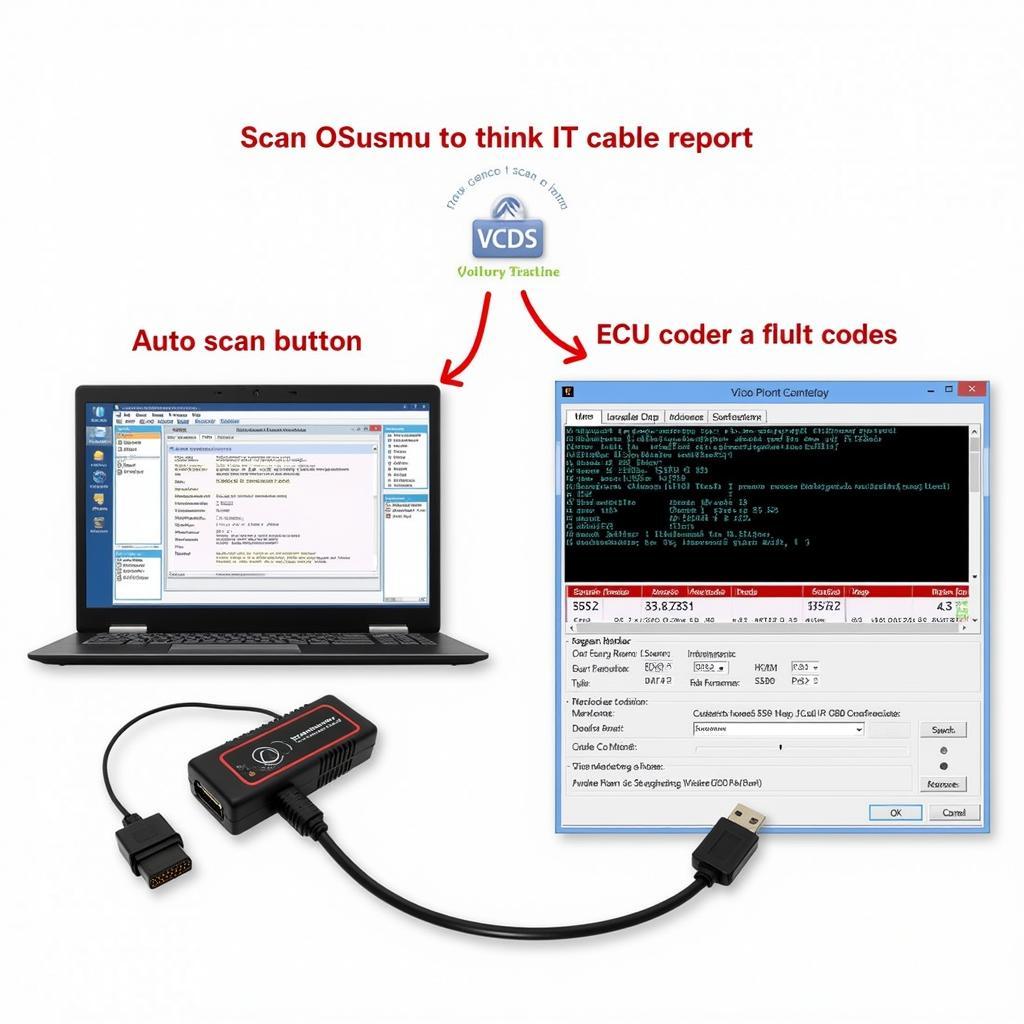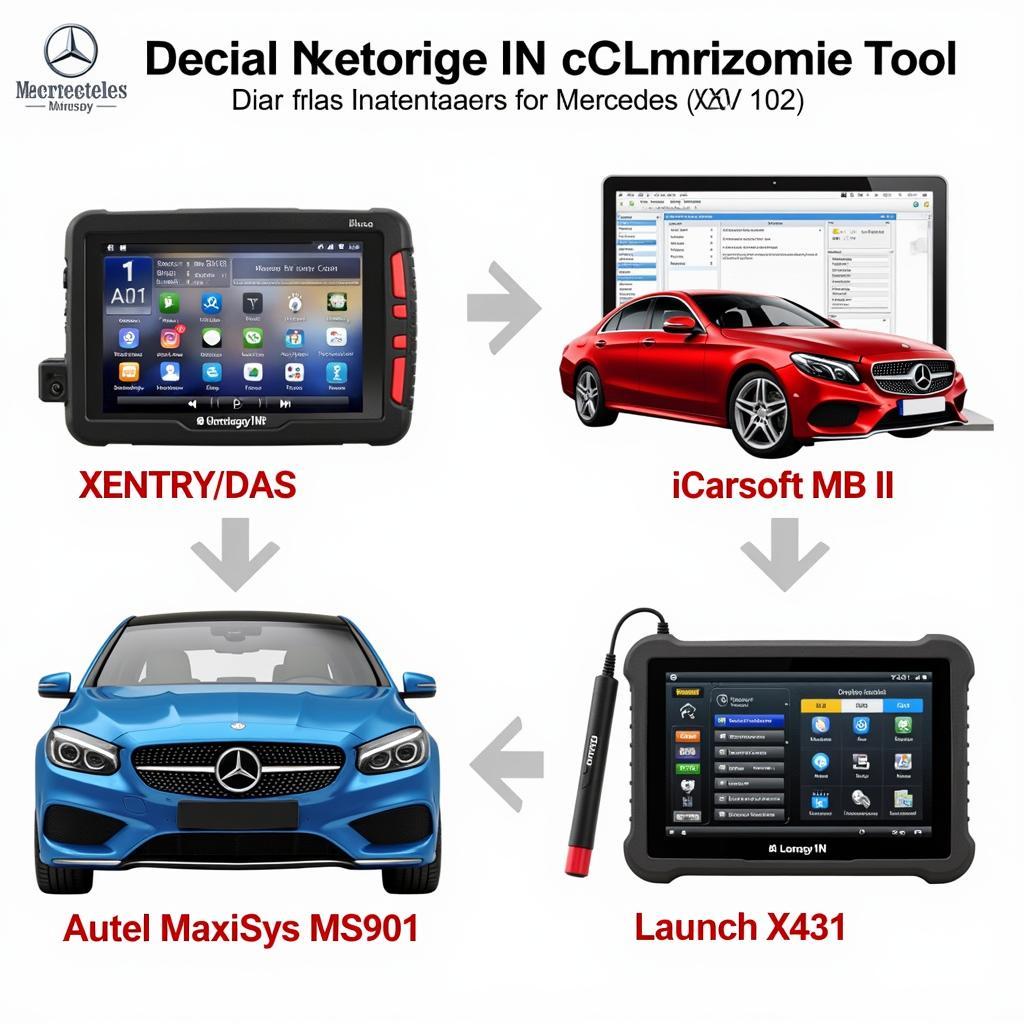The VCDS AC test is a powerful tool for diagnosing air conditioning issues in Volkswagen, Audi, Seat, and Skoda vehicles. Whether you’re a seasoned technician or a car owner eager to understand your vehicle better, this comprehensive guide will equip you with the knowledge to perform and interpret VCDS AC tests effectively. This will help you pinpoint problems and get your AC back to cooling efficiently.
Understanding the VCDS AC Test and its Importance
The VCDS (Vag-Com Diagnostic System) software allows you to access the various control modules within your vehicle, including the one responsible for your AC system. The VCDS AC test activates different components within the AC system, such as the compressor, fans, and temperature flaps. By observing their responses during the test, you can identify malfunctions and pinpoint the source of the problem. Regular VCDS AC tests can prevent minor AC issues from escalating into major repairs, saving you time and money. Furthermore, understanding these tests can empower you to communicate more effectively with technicians and make informed decisions about your car’s maintenance.
How to Perform a VCDS AC Test: A Step-by-Step Guide
Performing a VCDS AC test requires a VCDS interface cable and the VCDS software installed on your laptop. First, connect the interface cable to your vehicle’s OBD-II port and your laptop. Launch the VCDS software and select the correct control module for your car’s AC system. Typically, this is labeled as “08 – Auto HVAC.” Once you’re in the correct module, navigate to the “Output Tests” or “Basic Settings” function. This section allows you to activate individual components of the AC system. Follow the prompts within the VCDS software carefully, as they will guide you through the specific steps for testing each component.
Interpreting VCDS AC Test Results
Interpreting the results of a VCDS AC test requires a basic understanding of how the AC system works. For instance, if the compressor clutch doesn’t engage during the test, it could indicate a faulty clutch, low refrigerant, or a problem with the pressure switch. Similarly, if the cooling fans don’t activate, it could suggest a faulty fan motor, wiring issue, or a problem with the fan control module. By cross-referencing the observed behavior with known symptoms and common AC issues, you can narrow down the possibilities and identify the root cause of the problem. For example, you might find a correlation between unusual temperature flap movements and a faulty temperature sensor.
Common AC Issues Diagnosed with VCDS
The VCDS can diagnose a wide range of AC issues, including refrigerant leaks, faulty compressors, malfunctioning fans, and problems with the temperature control system. By analyzing the data provided by the VCDS, you can pinpoint the source of these problems and determine the appropriate repair strategy. Remember, if you’re not comfortable performing these diagnostics yourself, it’s always best to consult with a qualified automotive technician. They can provide expert interpretation of the VCDS results and guide you on the necessary repairs.
Similar to vcds actuator test, the VCDS AC test utilizes specific procedures to isolate and identify malfunctions.
Troubleshooting Tips for VCDS AC Tests
If you encounter difficulties during the VCDS AC test, ensure the interface cable is securely connected and the software is properly installed. Verify you have selected the correct control module for your car’s AC system. If you’re still having trouble, refer to the VCDS documentation or seek assistance from online forums and communities dedicated to VCDS users.
Conclusion
The VCDS AC test is an invaluable tool for diagnosing and resolving AC problems in your vehicle. By understanding how to perform the test and interpret the results, you can effectively troubleshoot AC issues, saving yourself time and money. Whether you choose to tackle the repairs yourself or consult a technician, the VCDS empowers you with the knowledge to make informed decisions about your car’s AC maintenance. Utilizing the VCDS AC test can significantly improve your ability to maintain optimal vehicle comfort.
FAQ
-
What is a VCDS AC test? A VCDS AC test utilizes specialized software to diagnose problems within a vehicle’s air conditioning system.
-
Do I need specialized equipment for a VCDS AC test? Yes, you need a VCDS interface cable and the VCDS software.
-
Can I perform a VCDS AC test myself? Yes, but if you are unsure, consult a qualified technician.
-
What are common AC issues diagnosed with VCDS? Refrigerant leaks, faulty compressors, and malfunctioning fans are common issues.
-
Where can I find more information about VCDS? Online forums and the official VCDS website are excellent resources.
-
What if my VCDS interface isn’t working? Check the connection and software installation. Consider vcds port test interface not found for troubleshooting.
-
Are there other tests I can run with VCDS? Yes, such as the vcds vacuum test.
For complex issues or if you’re unfamiliar with VCDS, refer to resources like vcds test interface not found or information on specific versions like vcds 16.8.
Need assistance with your car’s AC or other diagnostic needs? Contact us via Whatsapp: +1 (641) 206-8880, Email: CARDIAGTECH[email protected] or visit our workshop at 276 Reock St, City of Orange, NJ 07050, United States. Our 24/7 customer service team is ready to help.


